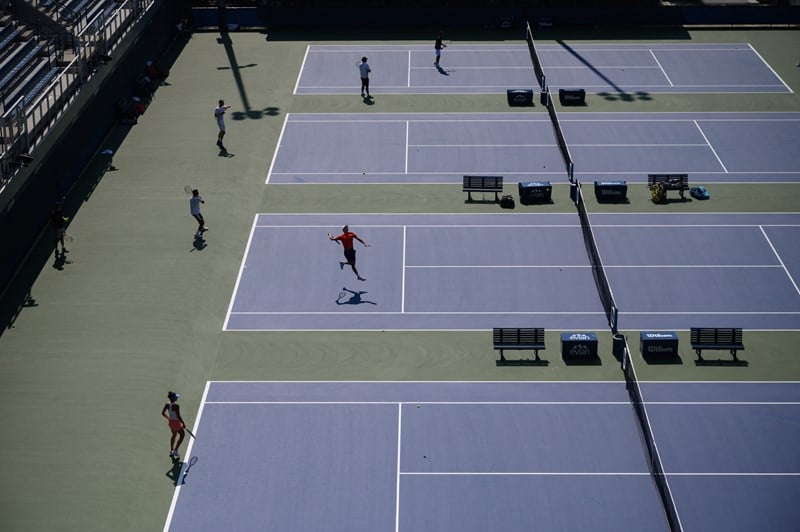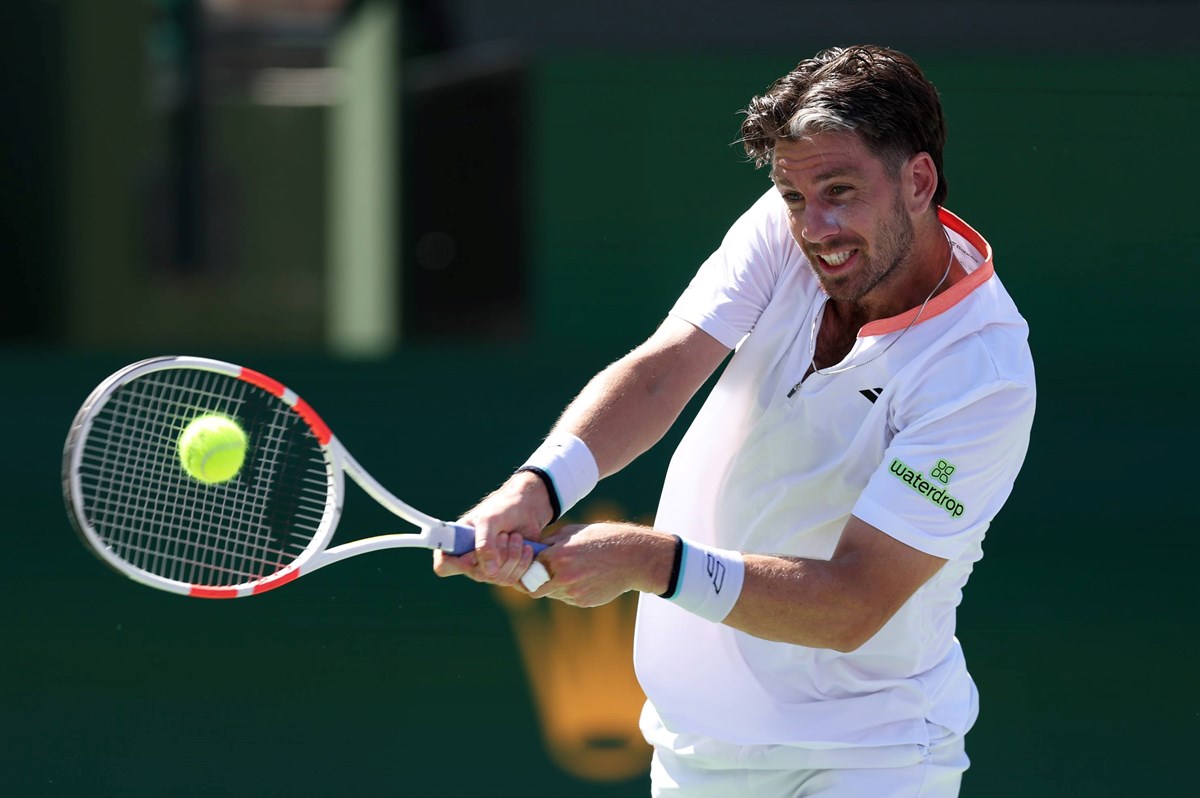What makes a good hard-court tennis player?

We’re now into the final part of the tennis season, as players move away from the grass to focus on the hard-court swing over in America and Asia, followed by final the indoor events of the year.
Making the transition from grass to hard courts brings with it several different changes from the speed and height of the ball, physical demands and styles of play.
With the help of LTA Head of Performance Coach Education Development Nick Weal, and LTA Senior Performance Analyst Hannah Langford, we breakdown the key characteristics of what makes a good hard-court tennis player.
Physical fitness
High levels of physical fitness are one of the most important attributes of any strong hard-court tennis player.
Rallies on hard courts tend to be longer and more taxing on the body than other surfaces due to its unforgiving nature and therefore requires players to be more fit and use explosive movements.
In the men’s game for example, the percentage of rallies that are five shots or more is at 40% on hard courts compared to an average of 34% on grass. Meanwhile on the WTA Tour 43% of points go over five shots compared to 37% on grass.

You must be able to endure greater impact under foot and deal with more aggressive shots from your opponent, which both require increased strength and conditioning compared with other surfaces.
Britain’s Jack Draper is a great example of this. Over the last few years, the British No.1 has put a lot of focus into the physical part of his game, and we’ve seen it pay off with his semi-final run at the US Open last year, as well as his five-set victories at the Australian Open.
Aggressive hitting
Hard courts favour aggressive hitters and players who like to attack early in rallies.
On a hard court, there is less variation in the bounce of the ball compared to clay and grass, and therefore it’s much easier to predict where it will be every time you hit a shot. This means you can time the ball better, therefore giving you more time to play more attacking shots with greater margin for error.
Courts also tend to play fast, which favours more aggressive players as naturally, if you’re able to play harder and quicker groundstrokes it gives your opponents less time to react.
All this means that you tend to play much fewer shots from a neutral position in the rallies i.e. rallying through the middle of the court. A good hard-court player must be good at playing on the front foot in attack but also being able to defend.
Fast first and kick second serves

While playing aggressive is important, you need a strong platform to be able to get on the attack early in points – that’s where an effective serve comes in.
Having a strong first and second serve isn’t a unique characteristic for good hard-court players alone, but there are some differences in what makes an effective serve on the surface.
Players with big, flat first serves tend to benefit on hard courts as the ball bounces faster and higher, making it difficult for opponents to neutralise the return.
Take someone like Katie Boulter for example, who can really utilise her first serve on the hard courts to then play more attacking shots on what we call ‘ball three’ – the shot after the return – which is crucial for her style of play.
Then on the second serve, a solid kick serve is an effective shot, taking advantage of the faster, higher bounce to drag opponents out of position from the start of the rally.
That’s why we often see players adopting a deep position on the return. On the ATP Tour players make contact in a deep return position (two metres behind the baseline) 23% of the time compared to 15% on grass. We see this even more on second serves, with players standing deep on return 29% of the time on hard courts and only 12% on grass.
You’ll see the best hard-court players utilising these serves and adding a bit of serve and volley to their game to take advantage of that deep return position.
Flat hitting
With less variation in how the ball bounces on court, different spins can be less effective on hard courts compared to both clay and grass. This makes it an ideal surface for players who like to hit the ball flat and hard.
Take Cam Norrie for example, who won the biggest title of his career on the hard courts in Indian Wells, he has one of the flattest backhands on tour. Then you’ve got someone like Daniil Medvedev, a former US Open champion and world No.1 who plays flat off both wings and has had all his greatest successes on hard courts.

Playing flat takes advantage of the faster courts and means the ball skids through much quicker, taking time away from your opponent.
That’s not to say that good hard-court players don’t use different types of spin – on the men’s tour players use 8% more top spin than on grass – but it does favour flat hitters more than any other surface.
All-round players
It might sound obvious, but the best hard-court players are those who have a strong all-round game.
More so than any other surface, you need to be effective in every area of your game – attack well, have a steely defence, be quick in and out of the corners, have quick footwork, impressive net skills, etc.
Because it’s easier for your opponents to get on the front foot in rallies, if they can spot a glaring weakness in your game, it’s much easier for them to pick on it throughout the course of the match.
There’s a reason why a player like Novak Djokovic – arguably the most complete player of all time – has won 14 majors on hard courts.
